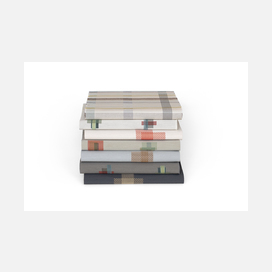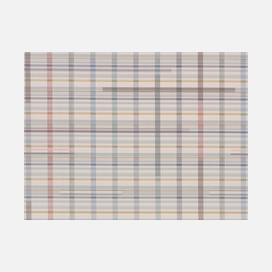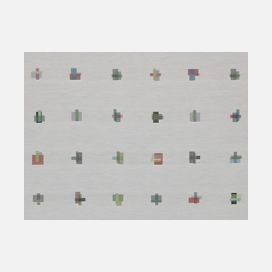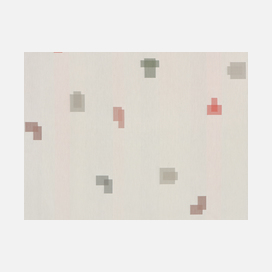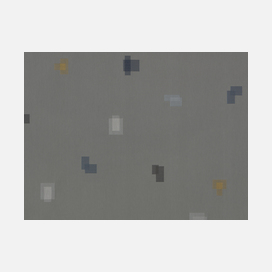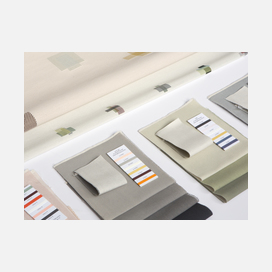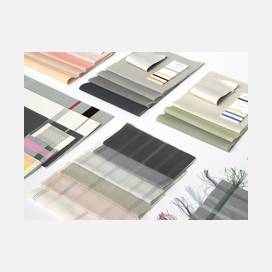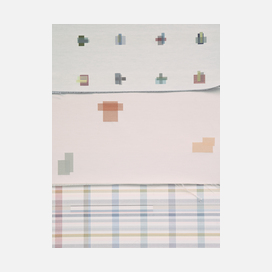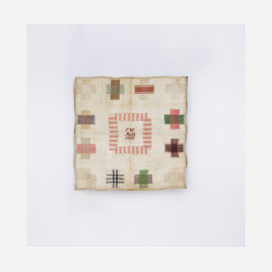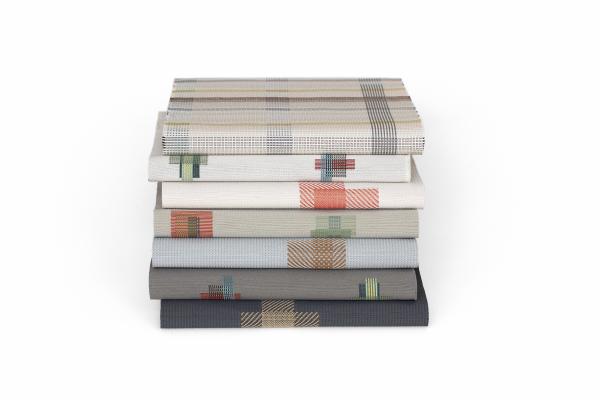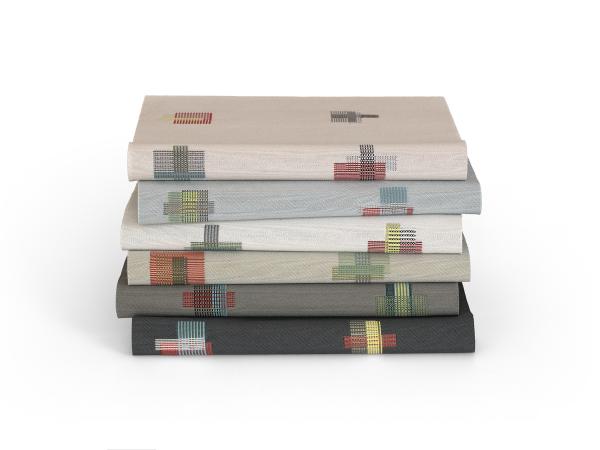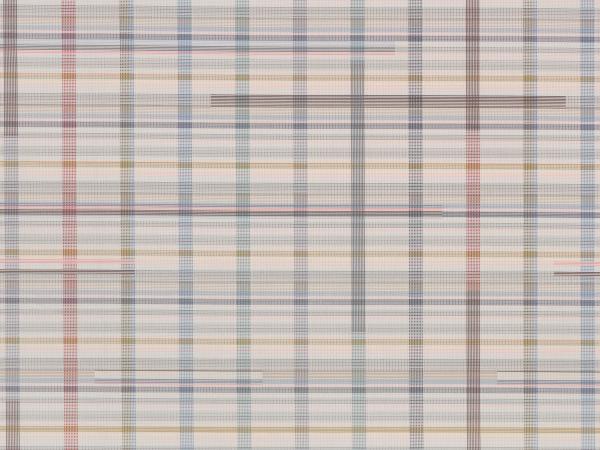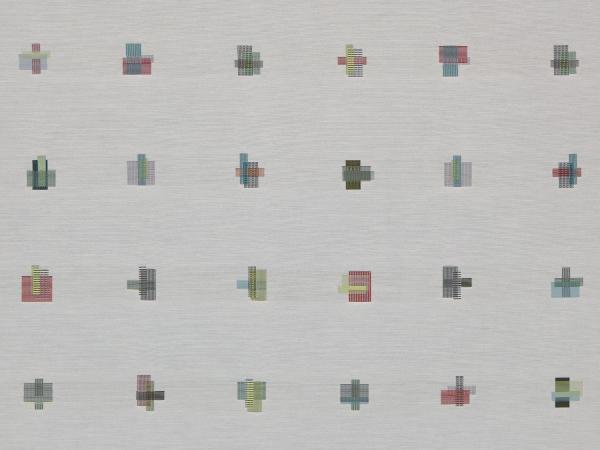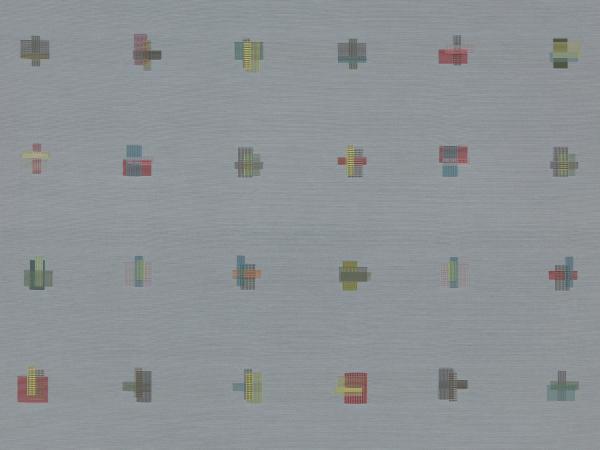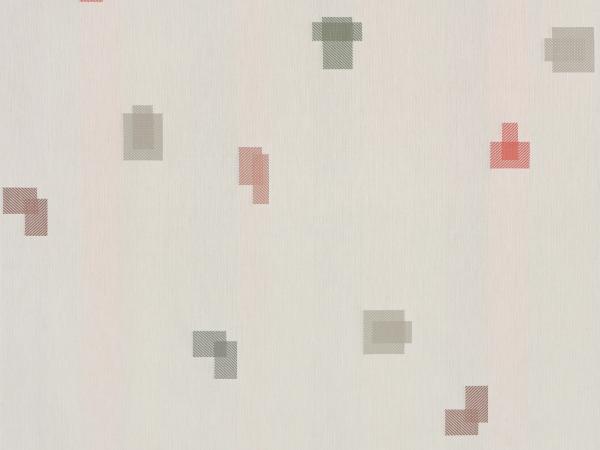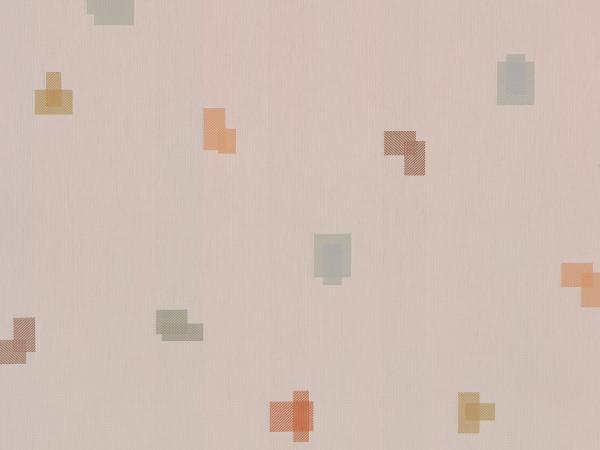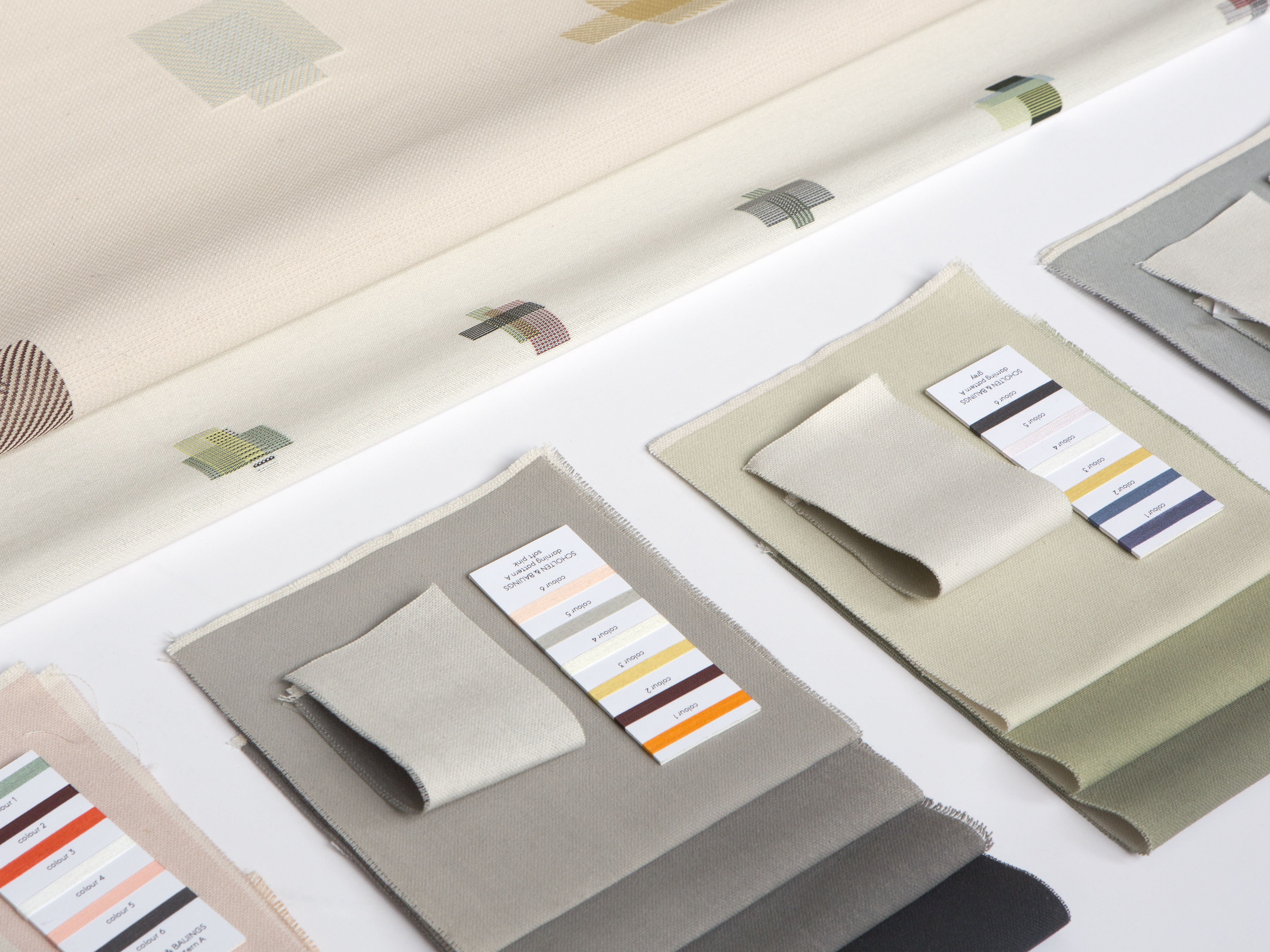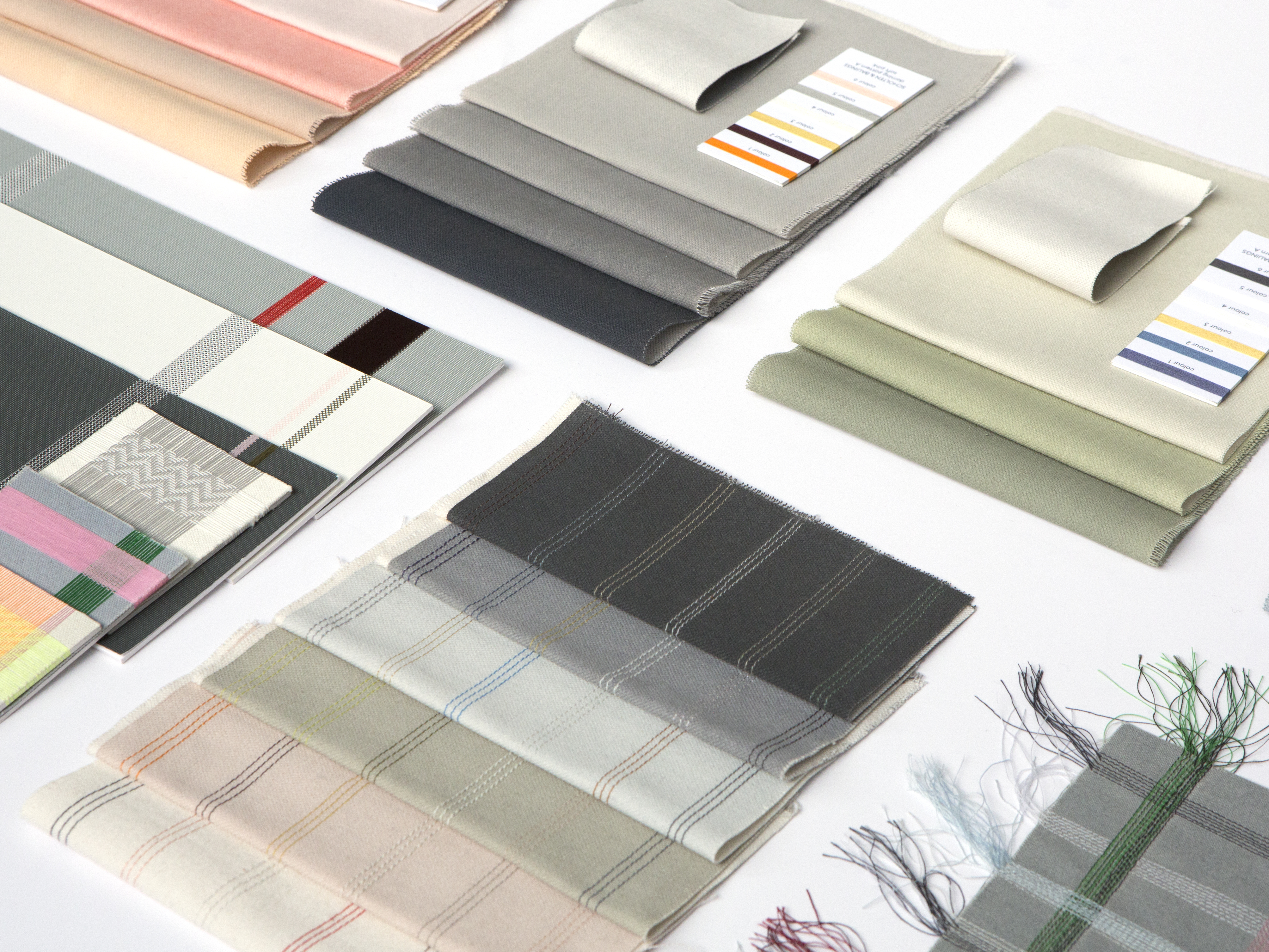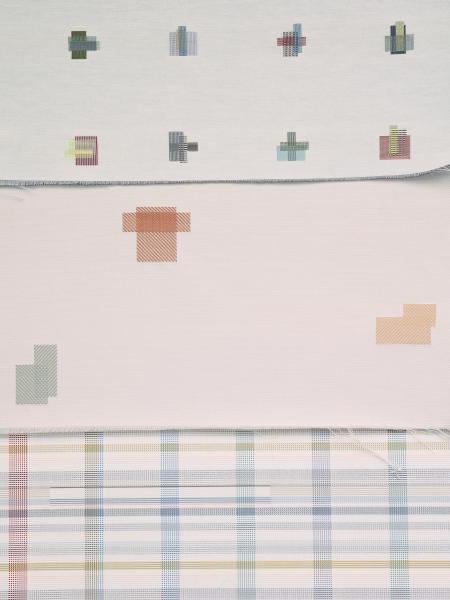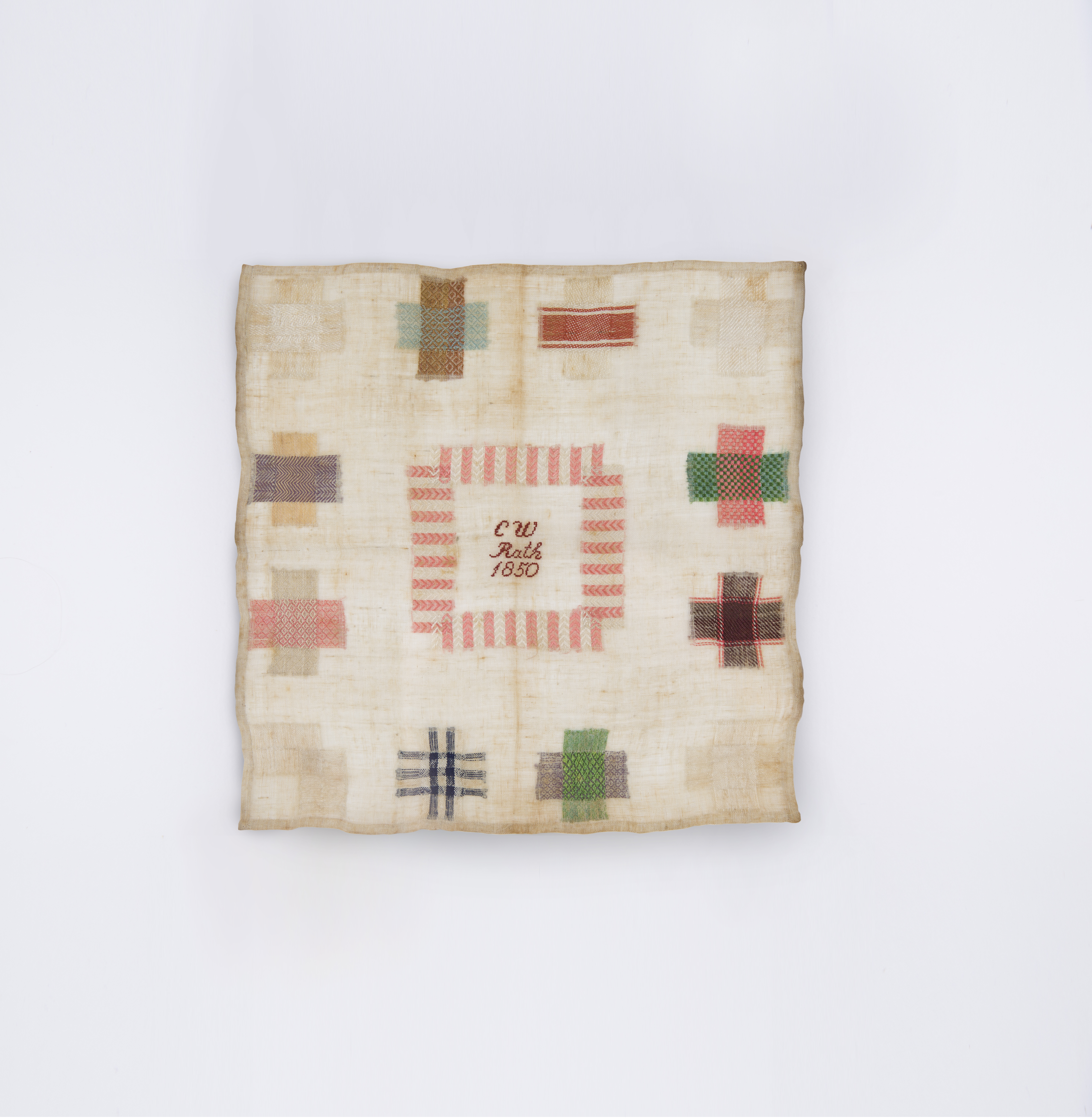Maharam’s fourth collaboration with Scholten & Baijings began with a suggestion by Mary Murphy, Maharam’s Senior Vice President of Design, that the Dutch designers delve into their textile heritage. Widely regarded for the complete aesthetic universes they create, Scholten & Baijings “embraced the idea and interpreted it with their usual passion and creativity,” says Murphy, while ultimately succeeding in creating something wholly new.
The project began with a joint visit to the Rijksmuseum’s textile archive in August 2016. When a resonant reference was not found, Murphy continued her research from the Maharam Design Studio in New York, emailing links to Dutch darning samplers to Carole and Stefan in Amsterdam. According to Stefan Scholten, “Mary came up with the fabulous idea of the darning samplers. Not even we, as real Hollanders, were aware of this old Dutch craft, believed to have originated in Holland!” Murphy explains, “I’ve always loved samplers and saw an immediate connection to Scholten and Baijings’s work when I first saw a Dutch darning sampler at the Cooper Hewitt, Smithsonian Design Museum.” As Carole Baijings points out, “The permanent collection of the Cooper Hewitt in New York includes a beautiful collection of darning samplers as well as our textile designs for Maharam. Actually, it feels quite logical now…” In short, the samplers’ anachronistically modern sense of simplicity, geometry, and color were a revelation to Scholten & Baijings, who soon tracked down two inspiring examples through an antique textiles dealer.
While the making of darning samplers dates back to ancient Egypt, it became a common activity among young women in western countries in the seventeenth and eighteenth centuries, with more detailed specimens originating in the Netherlands. Both functional and decorative, darning served multiple purposes—from prolonging the useful lives of valuable garments and household linens to ensuring the rightful return of laundry sent out—all the while providing women with a respectable source of supplementary income. While novice embroiders would first attempt a cross-stitch alphabet, the darning sampler marked one’s mastery of more complicated techniques and typically required a year to complete. Notes Baijings: “Many of the Dutch darning samplers were made by girls between eight and seventeen years old. The samplers are elaborate productions, showing methods for repairing many fabric types including plaids, silks and even knitted items. In those days, these were important skills for a young woman to possess and to pass on to others in order to get a husband. How different from today!”
Both reference pieces Scholten & Baijings sourced feature a linen ground and are signed by the embroiderer. The older of the two pieces, dated 1751, is formatted as a “band sampler” with a variety of stitches laid over a 3 x 4 grid. The majority of the stitching is done in rose, cyan, canary, black, and brown threads—brightly colored threads were often used to highlight the quality of the embroiderer’s work—but concludes with a faint row of monochrome “whitework.” The second sampler, from 1850, displays greater compositional consideration and a more imaginative use of color. Here, the embroiderer’s name and date are surrounded by pink-and-cream chevron stripes with eight colorful crosses neatly arrayed at cardinal points along the edges while four white-on-white crosses anchor each corner.
With these references in hand, Scholten & Baijings initiated early prototypes using their signature hands-on, atelier approach: fine threads were wrapped and interwoven around hand-painted canvas swatches or finely patterned prints, yarn windings were made, and a fringed plaid and series of stripes were machine stitched.
The resultant textiles explore this one tradition of weaving with needle and thread to three very different ends. Starting with an intricate graphic, Darning Sampler reflects the smallest scale and the most detail. Oriented on a spacious grid, petite motifs comprise several overlapping rectilinear planes, each rendered in its own weave structure and set of colors to yield a sense of depth and transparency. With its profusion of textures and hues—some of which are specially dyed—Darning Sampler posed the greatest technical challenge and for this reason the Maharam Design Studio attempted it first. The final construction is fine and densely woven, with additional colors tissued in at an excess of 150 yarns per inch in select areas.
Darning Sampler Large retains the openness of the first textile but presents a shift in scale. Beginning with rectangular bits of mesh in peach, carnelian, black, and olive overlaid on starched muslin, the pattern was translated into a woven textile in which two rectangles rendered in heavy twill overlap to form a dense new surface. Large expanses of dry, textured ground contribute towards an overall matte appearance.
At once simple and sophisticated, Darning Sampler Plaid manages to bridge the two rectilinear patterns with a unifying spectrum of color while achieving the largest scale. Realized in a single, pastel-inflected color scheme, Darning Sampler Plaid is a testament to the complexity achievable with time-honored weaving techniques. The pattern originated on the loom with weave trials of two different plaids that were then combined into one larger design, with the back of the textile reversed as face. Using a highly customized planted warp that changes color every quarter-inch, thick and thin yarns combine in a toothy construction with three-quarter-inch bands arising as overlays or omits for a spatial, bidirectional effect. By combining plain and rib weaves, the color interaction between warp and weft is manipulated so as to appear as micro box stitches in some areas and as tiny x’s in others, thereby connecting Darning Sampler Plaid back to its original inspiration.
As with previous collections, the suite of three textiles is intended to be used interchangeably. Interestingly, they represent a synthesis of scales explored by Scholten & Baijings in previous collaborations with Maharam: from the expansiveness of Blocks and Grid (2014) to the refined textures of Mesh, Tracery, and Pare (2017).
Looking back on eighteen months of design and development, Murphy comments, “I really loved working with Scholten & Baijings on a project that resonated so strongly with their aesthetic sensibility.” Remarking on the trio’s serendipitous nature, Scholten concludes, “Most Dutch darning samplers have been acquired by collectors and museums in Japan and the United States. We work frequently in both countries. That can’t be a coincidence!”
About Scholten & Baijings
Stefan Scholten and Carole Baijings founded the Amsterdam-based Scholten & Baijings, Studio for Design in 2000. Moving fluidly between artisanal and industrial processes, Scholten & Baijings creates products characterized by minimal forms enhanced by simple geometric patterning, a subtle use of materials, and an acute sense of color. Their many clients include BMW Group/MINI, Established & Sons, Thomas Eyck, HAY, IKEA, Georg Jensen, Moroso, Samsung, and Sèvres France. Their work, both commissioned and independent, is collected and exhibited worldwide. Reproducing Scholten & Baijings, the first monograph of the studio’s work, was designed by Joost Grootens, directed by Maharam, and published by Phaidon in February 2015.
In 2017, Maharam named Scholten & Baijings creative directors of an accessories collection initially developed exclusively for Japan. Spanning a range of materials and techniques, the offering includes original designs developed in collaboration with 1616 / arita japan and Karimoku New Standard, customized Maharam bears, and a series of Porter Yoshida & Co. bags reimagined through Maharam textiles. This assortment joins a robust selection of existing Maharam accessories—bags, pillows, and printed material—available through maharam.com and select retailers worldwide.
Darning Sampler
Introduction: July 2018
Content: 42% Post-Consumer Recycled Polyester, 33% Cotton, 25% Solution-Dyed Nylon
Colors: 6
Darning Sampler Large
Introduction: July 2018
Content: 75% Cotton, 25% Solution-Dyed Nylon
Colors: 6
Darning Sampler Plaid
Introduction: July 2018
Content: 90% Cotton, 10% Solution-Dyed Nylon
Colors: 1
